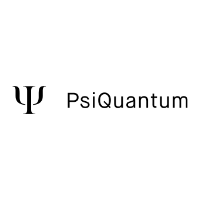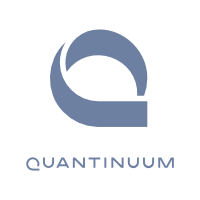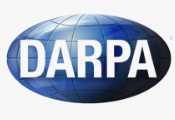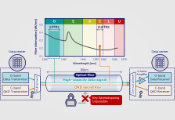Record Cold Quantum Refrigerator Paves Way for Reliable Quantum Computers
Record Cold Quantum Refrigerator Paves Way for Reliable Quantum Computers
Quantum computers require extreme cooling to perform reliable calculations. One of the challenges preventing quantum computers from entering society is the difficulty of freezing the qubits to temperatures close to absolute zero. Now, researchers at Chalmers University of Technology, Sweden, and the University of Maryland, USA, have engineered a new type of refrigerator that can autonomously cool superconducting qubits to record low temperatures, paving the way for more reliable quantum computation.
Novel Solid-State Device Offers Single Photons on Demand
Novel Solid-State Device Offers Single Photons on Demand
The group of CQT Principal Investigator Gao Weibo and their collaborators are the first to achieve near-unity quantum efficiency in 2D single photon emitters.
Attosecond Core-Level Spectroscopy Reveals Real-Time Molecular Dynamics
Attosecond Core-Level Spectroscopy Reveals Real-Time Molecular Dynamics
A team of European researchers has developed an attosecond core-level spectroscopy technique that can track the many-body molecular dynamics on its natural ultrafast timescale. Their work was benchmarked with furan, showing the power of their tool by successfully retrieving the entire history evolution of the dynamics and relaxation processes of a heterocyclic organic ring.
Quantum Spin Model Made From Nanographene Molecules
Quantum Spin Model Made From Nanographene Molecules
Empa researchers from the nanotech@surfaces laboratory have experimentally recreated another fundamental theoretical model from quantum physics, which goes back to the Nobel Prize laureate Werner Heisenberg. The basis for the successful experiment was a kind of “quantum Lego” made of tiny carbon molecules known as nanographenes. This synthetic bottom-up approach enables versatile experimental research into quantum technologies, which could one day help drive breakthroughs in the field.
Sneaky Clocks: Uncovering Einstein’s Relativity in an Interacting Atomic Playground
Sneaky Clocks: Uncovering Einstein’s Relativity in an Interacting Atomic Playground
Making a step forward in this direction, researchers led by JILA and NIST Fellows and University of Colorado Boulder physics professors Jun Ye and Ana Maria Rey—in collaboration with scientists at the Leibnitz University in Hanover, the Austrian Academy of Sciences, and the University of Innsbruck—proposed practical protocols to explore the effects of relativity, such as the gravitational redshift, on quantum entanglement and interactions in an optical atomic clock. Their work revealed that the interplay between gravitational effects and quantum interactions can lead to unexpected phenomena, such as atomic synchronization and quantum entanglement among particles. The results of this study were published in Physical Review Letters.
Quantum Maps for Molecules
Quantum Maps for Molecules
Researchers at the Max Planck Institute of Quantum Optics (MPQ), in collaboration with the chemicals company Covestro, have developed a new method for simulating chemical models using fermionic quantum simulators. The key advantage: The energetic states prepared in the lab obey the same laws as the electrons in molecules – which directly align with the molecular behaviour being simulated. By successfully mapping quantum chemistry algorithms onto their fermionic quantum simulator, the team has taken a significant step towards leveraging quantum computing for fundamental questions in chemistry.
Magnetic Semiconductor Preserves 2D Quantum Properties in 3D Material
Magnetic Semiconductor Preserves 2D Quantum Properties in 3D Material
There is a big problem with quantum technology — it’s tiny. The distinctive properties that exist at the subatomic scale usually disappear at macroscopic scales, making it difficult to harness their superior sensing and communication capabilities for real-world applications, like optical systems and advanced computing. Now, however, an international team led by physicists at Penn State and Columbia University has developed a novel approach to maintain special quantum characteristics, even in three-dimensional (3D) materials.
New Journal of Physics Highlights ICFO’s Key Contributions to Quantum Science
New Journal of Physics Highlights ICFO’s Key Contributions to Quantum Science
The United Nations has chosen 2025 to be the International Year of Quantum Science. To mark the event, the New Journal of Physics (NJP) has curated a collection of ten outstanding quantum articles published in the journal since its inception, including two significant contributions from ICFO.
New Spin on Quantum Liquids: Quasi-1D Dynamics in Molecular Spin Systems
New Spin on Quantum Liquids: Quasi-1D Dynamics in Molecular Spin Systems
Quantum spin liquids are fascinating states of matter where magnetic spins stay disordered, defying the usual rules of magnetism. Professor Yasuyuki Ishii and his team have made an exciting discovery about one such material, β’-EtMe₃Sb[Pd(dmit)₂]₂. Instead of acting like a 2D system as expected, it behaves like a 1D system. This breakthrough changes how we understand these mysterious materials, offering new insights into magnetism and opening doors to advances in quantum materials and technology.
Quantum Annealer Simulates False Vacuum Decay
Quantum Annealer Simulates False Vacuum Decay
The formation of the universe after the Big Bang is the subject of ongoing research. A team of scientists from Jülich Supercomputing Centre at Forschungszentrum Jülich, the University of Leeds and the Institute of Science and Technology Austria has now succeeded in gaining important insights into false vacuum decay, a process related to the formation of the universe and the behaviour of particles on the smallest scales. The calculations were carried out with a quantum annealer that is connected to a classical supercomputer at the Jülich Supercomputing Centre. Using a combination of calculations on the supercomputer and the quantum annealer, scientists were able to understand the phenomenon of false vacuum decay. The results have been published in the journal Nature Physics.


























